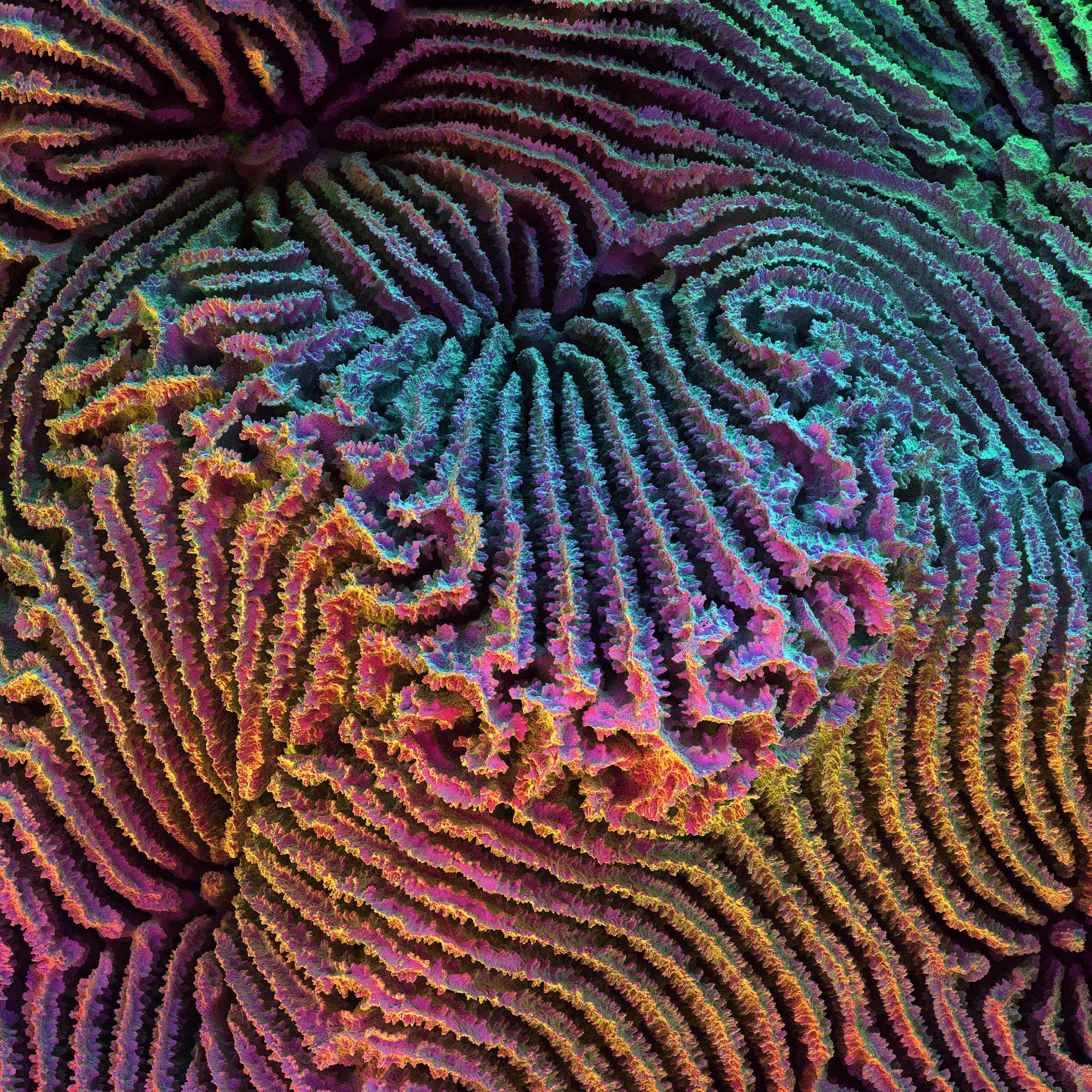Blurring the lines among science, art, and design

Polychromatic scanning electron micrograph of the skeletal details of the coral, Coscinaraea./Photo by James Weaver
Nature has a knack for producing things that seem to be perfectly designed for their place in the world: the sticky pads on geckos’ feet that help them grip slick surfaces, the way sunflowers turn to ‘follow” the sun throughout the day, the shape of snakes’ scales that allow them to grip the ground when flexed and slither over it when relaxed.
The growing recognition that the natural world is a source of nearly boundless inspiration for design is the basis of “Nature — Cooper Hewitt Design Triennial,” an exhibition that opens today simultaneously at the Cooper Hewitt Design Museum in New York and the Cube Design Museum in Kerkrade, The Netherlands. Featured among the more than 60 exhibits are five designs that represent Wyss Institute projects ranging from multi-scale molecular animations to a soft robotic glove to a new medical-grade adhesive, all of which take their cues from nature.
“Evolution has created exquisite solutions to the many challenges that life faces in its attempt to survive a changeable, sometimes extreme environment, and both scientists and designers can gain a great deal of insight from looking at natural systems and structures that have arisen over millennia of trial-and-error, selection, and optimization,” said Wyss Institute Founding Director Donald Ingber.
The Design Triennial series, inaugurated in 2000, looks at new developments in design as they surface in a variety of fields around the world. This year’s event features innovative projects that highlight the ways designers are collaborating with scientists, engineers, farmers, environmentalists, and nature itself to design a more harmonious and regenerative future.
The works featured span various design disciplines, including architecture, urbanism, product design, landscape design, fashion, communication design, and healthcare that enhance and reimagine humans’ relationship to the natural world. The exhibition seeks to inspire ideas, collaboration, and dialogue to address the most significant and consequential environmental and humanitarian issues of our time.
The exhibits are displayed in both museums, and are organized into groups based on different ways humans can interact with nature: understand, simulate, salvage, facilitate, augment, remediate, and nurture.





